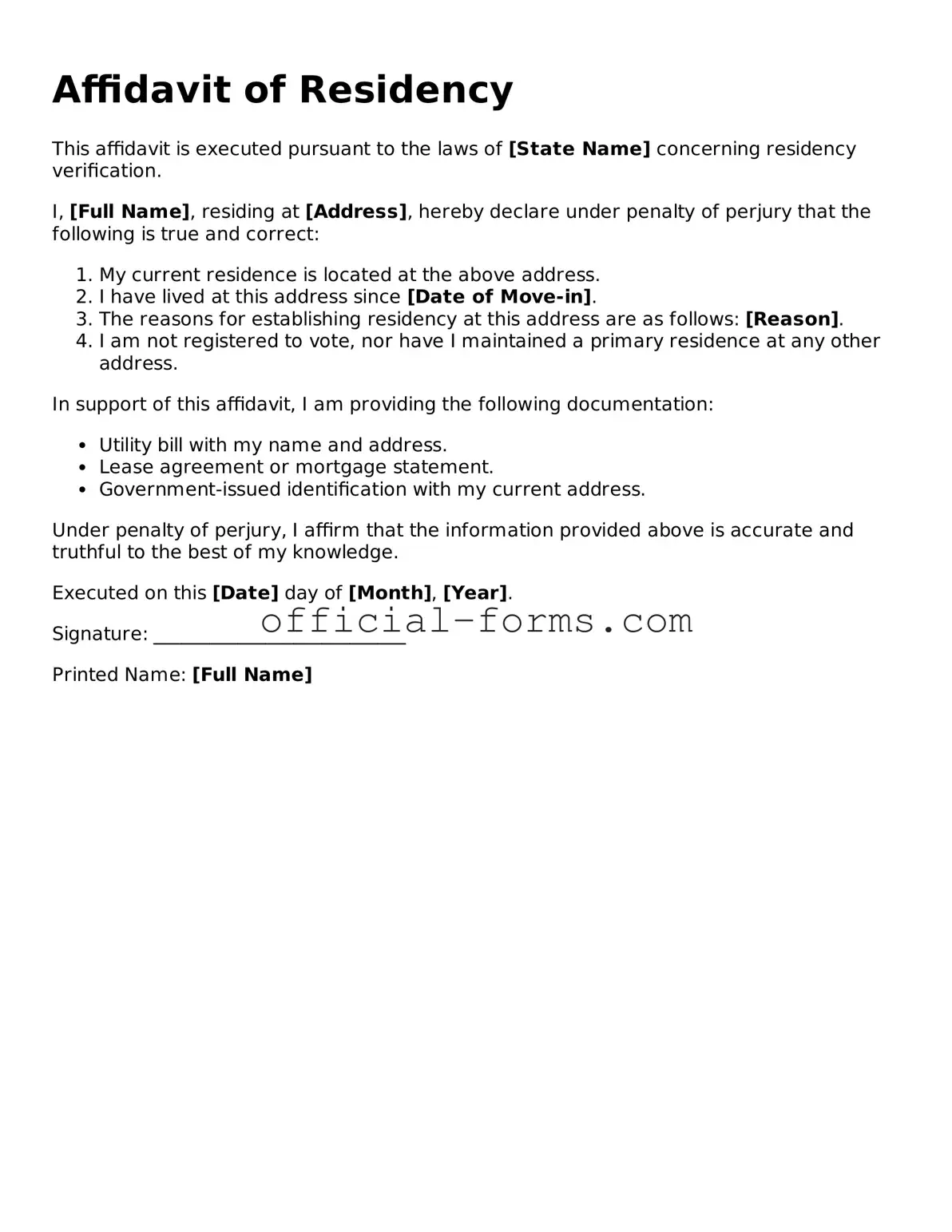Completing the Affidavit of Residency form can be a straightforward process, yet many individuals encounter common pitfalls. One frequent mistake is failing to provide accurate information. It is essential to ensure that all details, such as names, addresses, and dates, are correct. Even a small error can lead to significant complications.
Another common error is neglecting to sign the form. An unsigned affidavit may be deemed invalid. It is crucial to review the document thoroughly before submission to ensure that all required signatures are present.
Some individuals overlook the requirement for a witness or notary. Depending on the jurisdiction, the affidavit may need to be notarized or signed in the presence of a witness. Failing to meet this requirement can invalidate the document.
In addition, individuals often forget to include supporting documentation. Providing evidence of residency, such as utility bills or lease agreements, can strengthen the affidavit. Without this documentation, the affidavit may lack credibility.
Another mistake involves submitting the form to the wrong agency or organization. Each jurisdiction may have specific requirements regarding where to file the affidavit. It is vital to confirm the appropriate destination for submission.
Some people rush through the process and do not read the instructions carefully. Each affidavit may have unique requirements that must be followed. Taking the time to understand these instructions can prevent errors.
Additionally, individuals sometimes use outdated forms. Laws and regulations can change, and using an old version of the affidavit may lead to complications. Always ensure that the most current form is being used.
Finally, a lack of clarity in the statements made within the affidavit can lead to misunderstandings. Clear and concise language is essential to ensure that the intent of the affidavit is easily understood. Ambiguities can result in delays or rejections.
